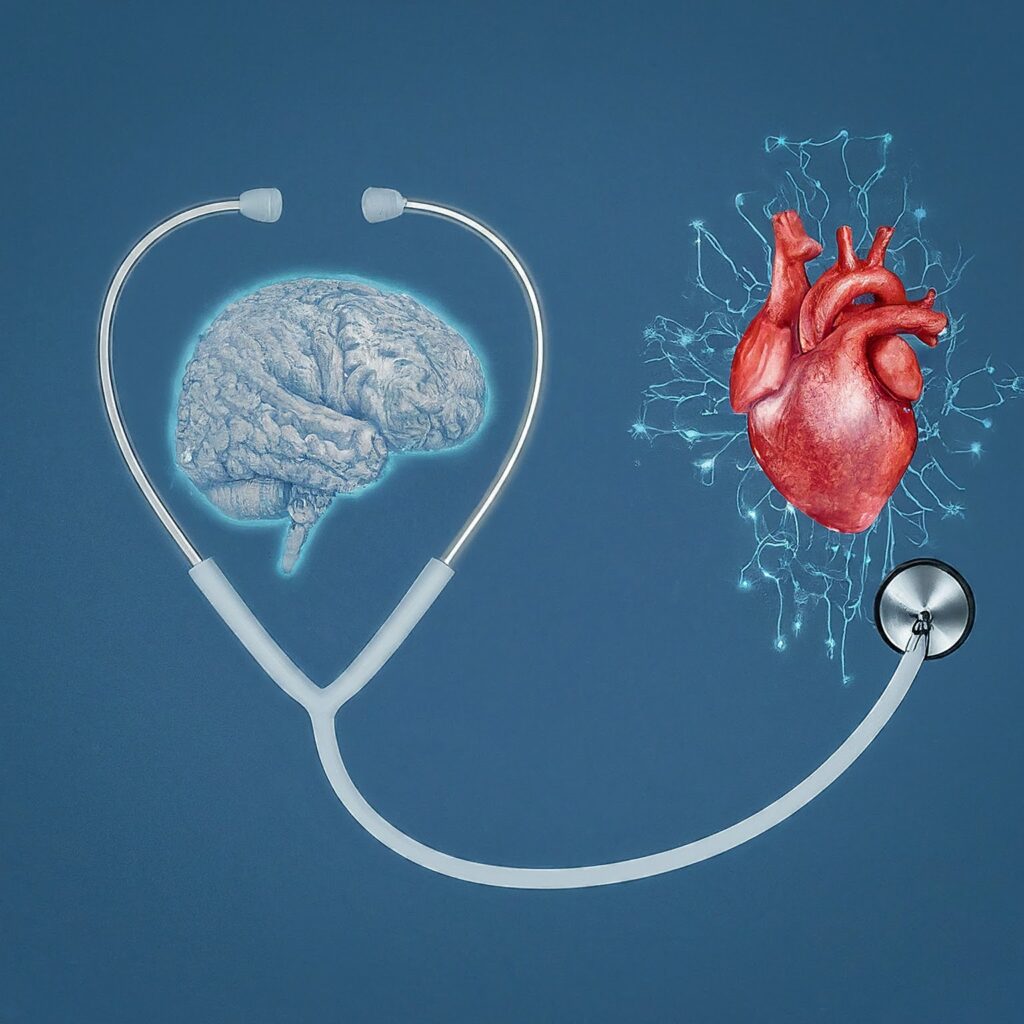The economic impact of AI in healthcare keeps growing as the world’s population ages. AI controls cost increases by making processes more efficient. Tools like automated diagnostics, predictive analytics, virtual nursing chatbots, and robotic surgeries will continue to expand AI’s economic impact in healthcare over the coming decades.
AI Innovation Saves Money
The economic impact of AI in healthcare is already massive, with an estimated savings of $150 billion in 2026. Several pressing factors are driving healthcare AI innovation even further, including severe clinical practitioner shortages, overwhelming patient caseloads, and errors compounding from fatigue. AI can make healthcare resources more efficient by processing insights faster, predicting the best treatments algorithmically, offering 24/7 nursing chatbot assistants, and making complex biomedical advances more accessible.
Scalable systems can optimize overstrained resource supplies, unlock biomedical advances through data consolidation, and scale web search indexes. The economic impact of AI in healthcare is exploding, with investments expected to balloon from $5 billion in 2020 to $45 billion by 2026.
The Current AI in Healthcare Landscape
Several convergent macro-healthcare trends highlight the need for fast development and support for AI implementation from policy levels all the way down to the clinical frontlines. The gap is continuing to widen between the number of available practitioners and patients who are getting older and more chronically ill.
Advanced AI analysis tools help dangerously overworked areas by automatically categorizing conditions to help overworked healthcare workers, predicting the best treatment paths based on new research, analyzing electronic health records, and keeping an eye on patients’ care plans through chatbots. Such innovations could also democratize access for underserved rural areas lacking advanced specialists.
AI Market Boom in the 2020s
Tracking with the general global artificial intelligence market, AI in healthcare is also expected to boom, with startup companies expected to exceed 10,000 by 2025. Cloud-based subscription models minimize barriers to testing affordable AI app access, with revenue share pricing structures allowing gradual, optimized rolled deployments aligned to validated health outcomes.
Tailored to niche hospital systems, these models are expanding treatment options and providing equal access to care that was previously limited to major metropolitan areas. Growth is expected to be broad in the 2020s, especially when telehealth and mobile delivery applications are taken into account.
Minimize Staff and Maximize Action
Applying advanced deep learning neural networks to vast datasets from clinical research, trials, and patient electronic health records shows tremendous promise in identifying early biomarkers and forecasting disease progression years ahead of previous standards. Doctors can find conditions earlier and treat their more obvious causes by comparing genetic predispositions with lifestyle risk factors, which saves a lot of money compared to waiting until later stages of a disease.
Automating boring and error-prone repetitive analysis tasks like interpreting blood tests, comparing x-rays, and making genetic markers easier to understand, healthcare workers can focus their limited time on making important decisions. Personalized engagement AI chatbots with natural conversation and 24/7 availability eliminate the need for more staff.
Using AI on huge datasets from niche medical journals, clinical trial results, and patient electronic health records is too much for a single practitioner to do by hand. AI systems can overcome severely limited human mental bandwidth by quickly processing and accessing healthcare’s mounting knowledge base. AI implementation allows for data standardization and enhanced patient privacy, bridging user interaction gaps with apps. Accountability and ultimate decision autonomy remains with doctors, rather than algorithms.
Overcoming Adoption Hurdles
As global health authorities struggle with collaboration, staffing shortages, and rising costs, medical accessibility crises are a reality in many areas. Governments need to support collaboration across multiple fields and build bridges between digital regulators, healthcare authorities, and competitive private sector players to make sure that large-scale AI adoption is implemented responsibly, both economically and socially. The monumental potential of improving patient outcomes through equitable access to affordable, routine care and positive fiscal outcomes may speed up implementation timelines.
The Bottom Line
Healthcare centers who are already implementing AI systems are reaping the financial rewards. As the market grows and more and more hospitals and care centers utilize AI, the returns will continue to grow. Handing off tedious tasks to artificial intelligence saves healthcare workers time, allowing them to focus on making crucial decisions for patients.
Ready to take your customer support to the next level? Try Gloria AI™ on your website for free!
The economic impact of AI in healthcare keeps growing as the world’s population ages. AI controls cost increases by making processes more efficient. Tools like automated diagnostics, predictive analytics, virtual nursing chatbots, and robotic surgeries will continue to expand AI’s economic impact in healthcare over the coming decades.
AI Innovation Saves Money
The economic impact of AI in healthcare is already massive, with an estimated savings of $150 billion in 2026. Several pressing factors are driving healthcare AI innovation even further, including severe clinical practitioner shortages, overwhelming patient caseloads, and errors compounding from fatigue. AI can make healthcare resources more efficient by processing insights faster, predicting the best treatments algorithmically, offering 24/7 nursing chatbot assistants, and making complex biomedical advances more accessible.
Scalable systems can optimize overstrained resource supplies, unlock biomedical advances through data consolidation, and scale web search indexes. The economic impact of AI in healthcare is exploding, with investments expected to balloon from $5 billion in 2020 to $45 billion by 2026.
The Current AI in Healthcare Landscape
Several convergent macro-healthcare trends highlight the need for fast development and support for AI implementation from policy levels all the way down to the clinical frontlines. The gap is continuing to widen between the number of available practitioners and patients who are getting older and more chronically ill.
Advanced AI analysis tools help dangerously overworked areas by automatically categorizing conditions to help overworked healthcare workers, predicting the best treatment paths based on new research, analyzing electronic health records, and keeping an eye on patients’ care plans through chatbots. Such innovations could also democratize access for underserved rural areas lacking advanced specialists.
AI Market Boom in the 2020s
Tracking with the general global artificial intelligence market, AI in healthcare is also expected to boom, with startup companies expected to exceed 10,000 by 2025. Cloud-based subscription models minimize barriers to testing affordable AI app access, with revenue share pricing structures allowing gradual, optimized rolled deployments aligned to validated health outcomes.
Tailored to niche hospital systems, these models are expanding treatment options and providing equal access to care that was previously limited to major metropolitan areas. Growth is expected to be broad in the 2020s, especially when telehealth and mobile delivery applications are taken into account.
Minimize Staff and Maximize Action
Applying advanced deep learning neural networks to vast datasets from clinical research, trials, and patient electronic health records shows tremendous promise in identifying early biomarkers and forecasting disease progression years ahead of previous standards. Doctors can find conditions earlier and treat their more obvious causes by comparing genetic predispositions with lifestyle risk factors, which saves a lot of money compared to waiting until later stages of a disease.
Automating boring and error-prone repetitive analysis tasks like interpreting blood tests, comparing x-rays, and making genetic markers easier to understand, healthcare workers can focus their limited time on making important decisions. Personalized engagement AI chatbots with natural conversation and 24/7 availability eliminate the need for more staff.
Using AI on huge datasets from niche medical journals, clinical trial results, and patient electronic health records is too much for a single practitioner to do by hand. AI systems can overcome severely limited human mental bandwidth by quickly processing and accessing healthcare’s mounting knowledge base. AI implementation allows for data standardization and enhanced patient privacy, bridging user interaction gaps with apps. Accountability and ultimate decision autonomy remains with doctors, rather than algorithms.
Overcoming Adoption Hurdles
As global health authorities struggle with collaboration, staffing shortages, and rising costs, medical accessibility crises are a reality in many areas. Governments need to support collaboration across multiple fields and build bridges between digital regulators, healthcare authorities, and competitive private sector players to make sure that large-scale AI adoption is implemented responsibly, both economically and socially. The monumental potential of improving patient outcomes through equitable access to affordable, routine care and positive fiscal outcomes may speed up implementation timelines.
The Bottom Line
Healthcare centers who are already implementing AI systems are reaping the financial rewards. As the market grows and more and more hospitals and care centers utilize AI, the returns will continue to grow. Handing off tedious tasks to artificial intelligence saves healthcare workers time, allowing them to focus on making crucial decisions for patients.
Ready to take your customer support to the next level? Try Gloria AI™ on your website for free!



